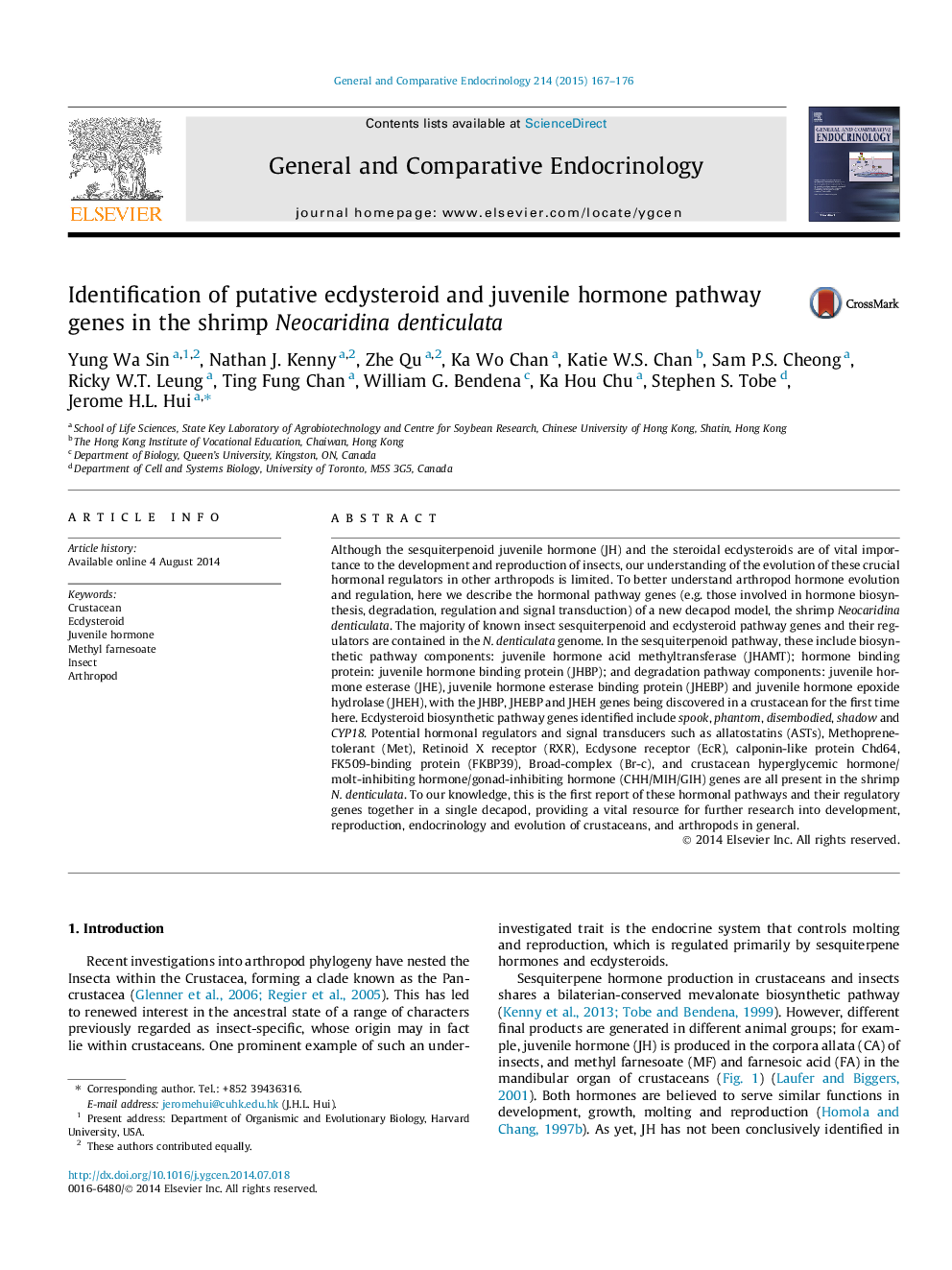| Article ID | Journal | Published Year | Pages | File Type |
|---|---|---|---|---|
| 2799989 | General and Comparative Endocrinology | 2015 | 10 Pages |
•The first categorization of the complete sesquiterpenoid pathway in a crustacean.•The first categorization of the ecdysteroid pathway of a malacostracan.•Presence of three unexpected insect juvenile hormone pathway genes in a crustacean.
Although the sesquiterpenoid juvenile hormone (JH) and the steroidal ecdysteroids are of vital importance to the development and reproduction of insects, our understanding of the evolution of these crucial hormonal regulators in other arthropods is limited. To better understand arthropod hormone evolution and regulation, here we describe the hormonal pathway genes (e.g. those involved in hormone biosynthesis, degradation, regulation and signal transduction) of a new decapod model, the shrimp Neocaridina denticulata. The majority of known insect sesquiterpenoid and ecdysteroid pathway genes and their regulators are contained in the N. denticulata genome. In the sesquiterpenoid pathway, these include biosynthetic pathway components: juvenile hormone acid methyltransferase (JHAMT); hormone binding protein: juvenile hormone binding protein (JHBP); and degradation pathway components: juvenile hormone esterase (JHE), juvenile hormone esterase binding protein (JHEBP) and juvenile hormone epoxide hydrolase (JHEH), with the JHBP, JHEBP and JHEH genes being discovered in a crustacean for the first time here. Ecdysteroid biosynthetic pathway genes identified include spook, phantom, disembodied, shadow and CYP18. Potential hormonal regulators and signal transducers such as allatostatins (ASTs), Methoprene-tolerant (Met), Retinoid X receptor (RXR), Ecdysone receptor (EcR), calponin-like protein Chd64, FK509-binding protein (FKBP39), Broad-complex (Br-c), and crustacean hyperglycemic hormone/molt-inhibiting hormone/gonad-inhibiting hormone (CHH/MIH/GIH) genes are all present in the shrimp N. denticulata. To our knowledge, this is the first report of these hormonal pathways and their regulatory genes together in a single decapod, providing a vital resource for further research into development, reproduction, endocrinology and evolution of crustaceans, and arthropods in general.
Graphical abstractFigure optionsDownload full-size imageDownload as PowerPoint slide
